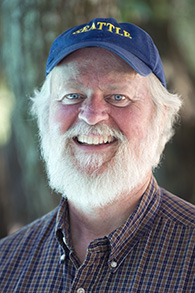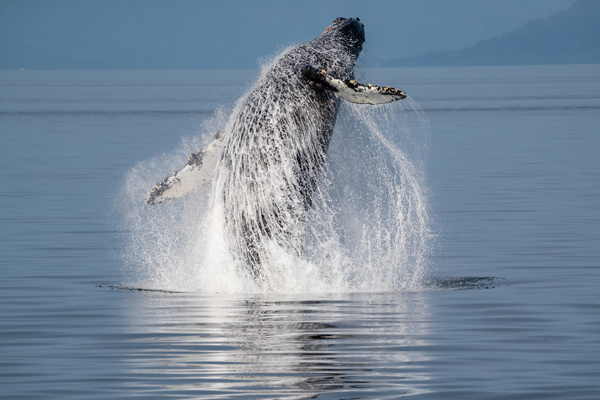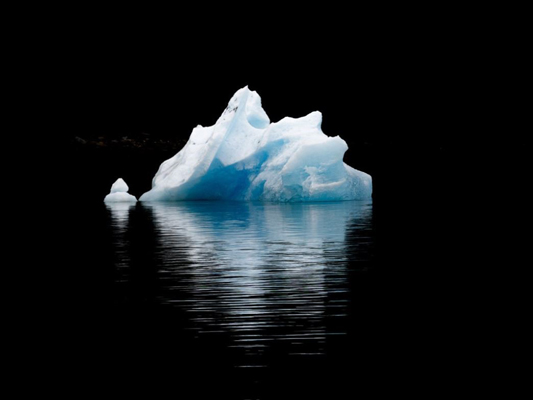Russia’s economy was in bad shape after it lost the Crimean war to Britain, France, and the Ottoman Empire in 1856. Fearing a British takeover of its Russian-America land holding of Alaska, it decided to offer to sell Alaska to the United States. Secretary of State William Seward had wanted to purchase Alaska for quite some time as part of “Manifest Destiny”—the belief that American settlers were divinely destined to expand their dominion across the entire North American continent.
Sitka, on Baranof Island, was the site of the transfer ceremony of the Alaska Purchase on October 18, 1867. It was a good deal for the US. The cost to purchase Alaska was $7.2 million—two cents per acre. I don’t suppose Alaska’s native population was consulted.
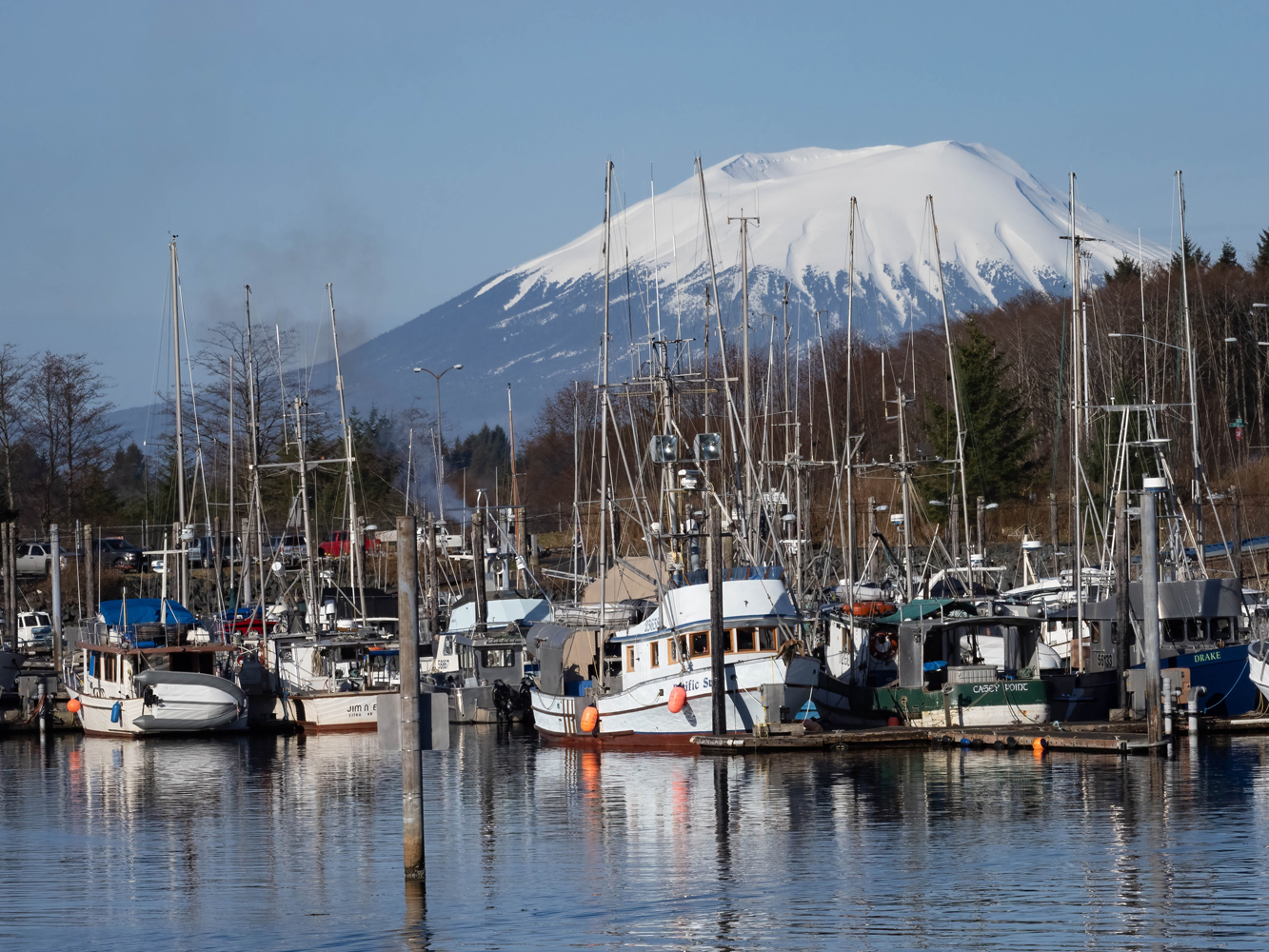
Our Humpbacks, Eagles and Alaska’s Spectacular Herring Spawn photo cruise started in Sitka on March 26 almost 154 years later. This was the first trip away from home for most of our small group since the start of the pandemic, and they felt like they had been stuck at home for almost all of those 154 years! But for this trip, it was worth the wait!
Straight out of the Sitka Harbor we headed north and in full view of incredible Mount Edgecumbe. The mountain is a stratovolcano—cone-shaped like Japan’s Mount Fuji—with a well-defined crater. At this time of year it is wondrously crowned with snow. Edgecumbe last erupted about 4,000 years ago. If I could have included it in every image I made on this trip, I would have!
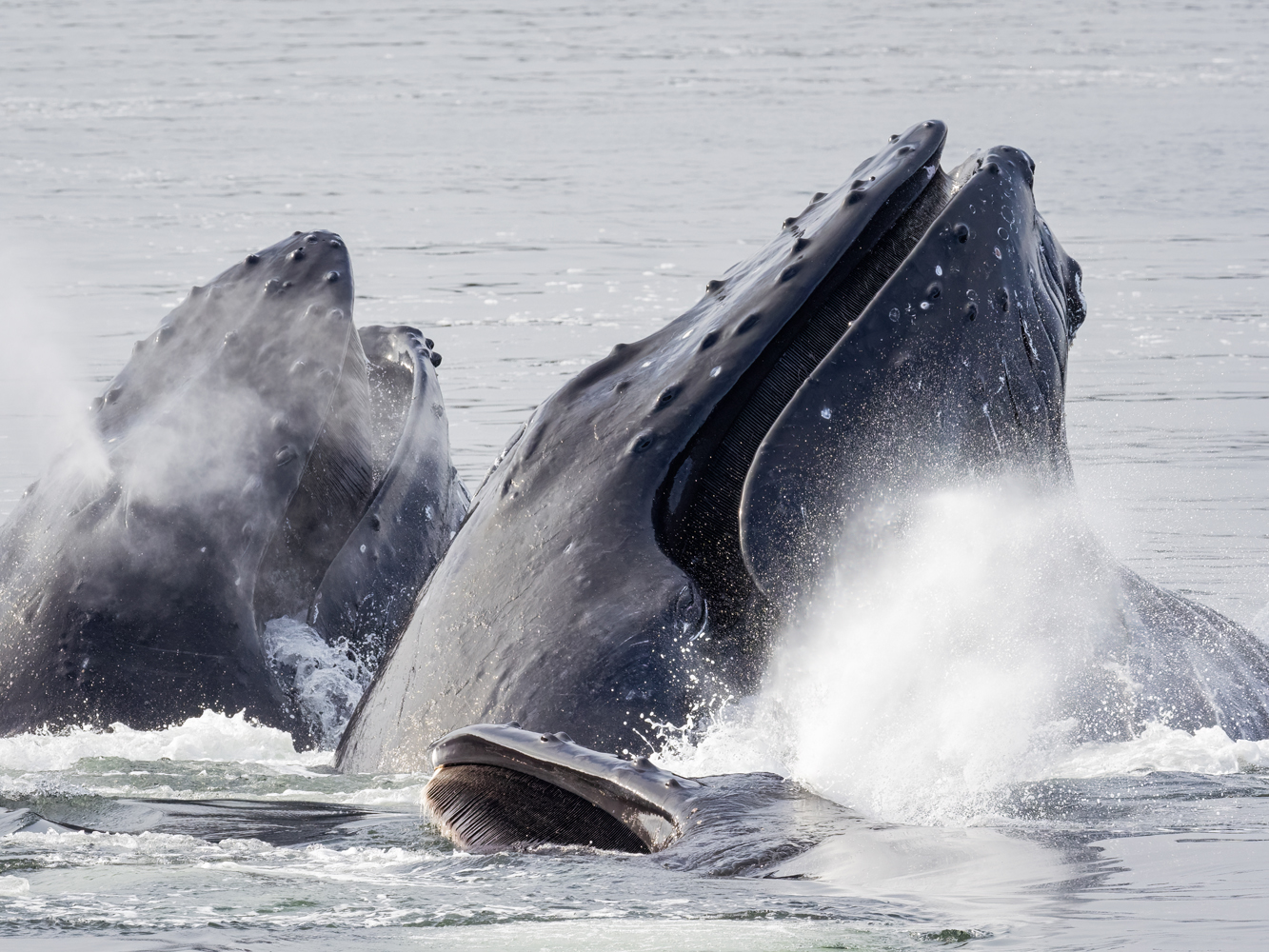
We were hardly out of the harbor when we started seeing our first humpback whales. We paused, briefly, to have a look and then continued as we knew to expect the “mother lode” of whales that we would soon see. In the meantime, we were still dazzled by Mount Edgecumbe and the snowy peaks on Baranof Island on this blue-sky day. The sea was calm allowing us to cruise away from the protection of the mainland and larger islands to farther offshore St. Lazaria Island. St. Lazaria is a designated no-landing bird sanctuary that is populated by thousands of birds later in the spring. The basaltic geology of the island is very photogenic and there is where we had our first glimpse of humpbacks lunge feeding through the shoals of Pacific herring. We would spend the night in a sheltered cove there.
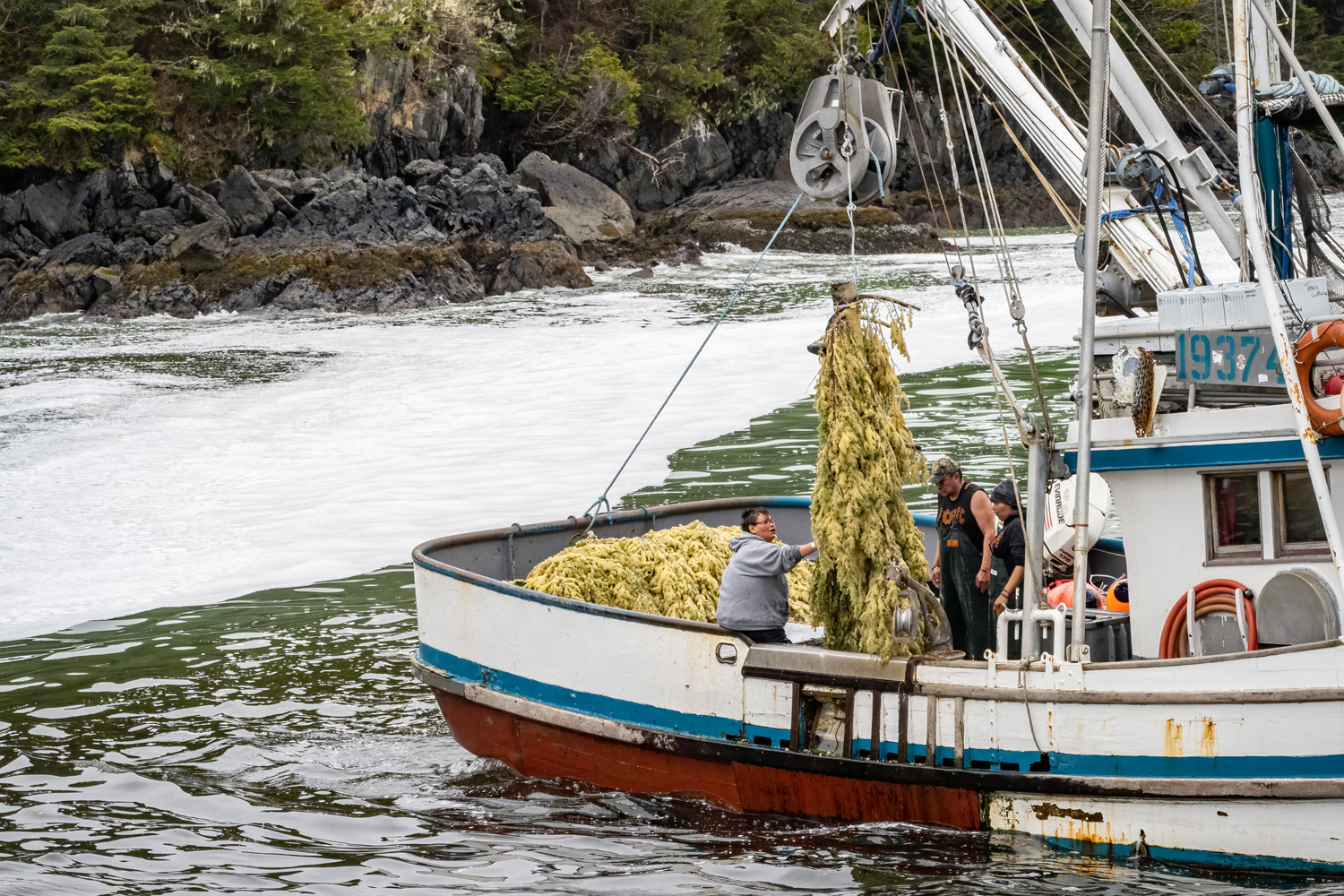
We awoke to a fiery sunrise over Baranof Island that gradually transformed into an array of pastel colors. Our calm morning gave rise to windy offshore conditions that would be blowing for much of the trip. Fortunately, the herring spawn was taking place in the sheltered waters off of Hayward Straight—and that was where the whales were bubble-netting, the herring seiners were working, and the native Tlingit people were harvesting herring eggs in their traditional way.
There is lots of drama as the competition for herring resources between their predators— man, whales, sea lions, birds, and other larger fish—integrate. Frothy milt (herring sperm) is evident at the spawn area of the intertidal zone where females lay their eggs in thick clusters on the various shallow seaweeds and kelp beds.
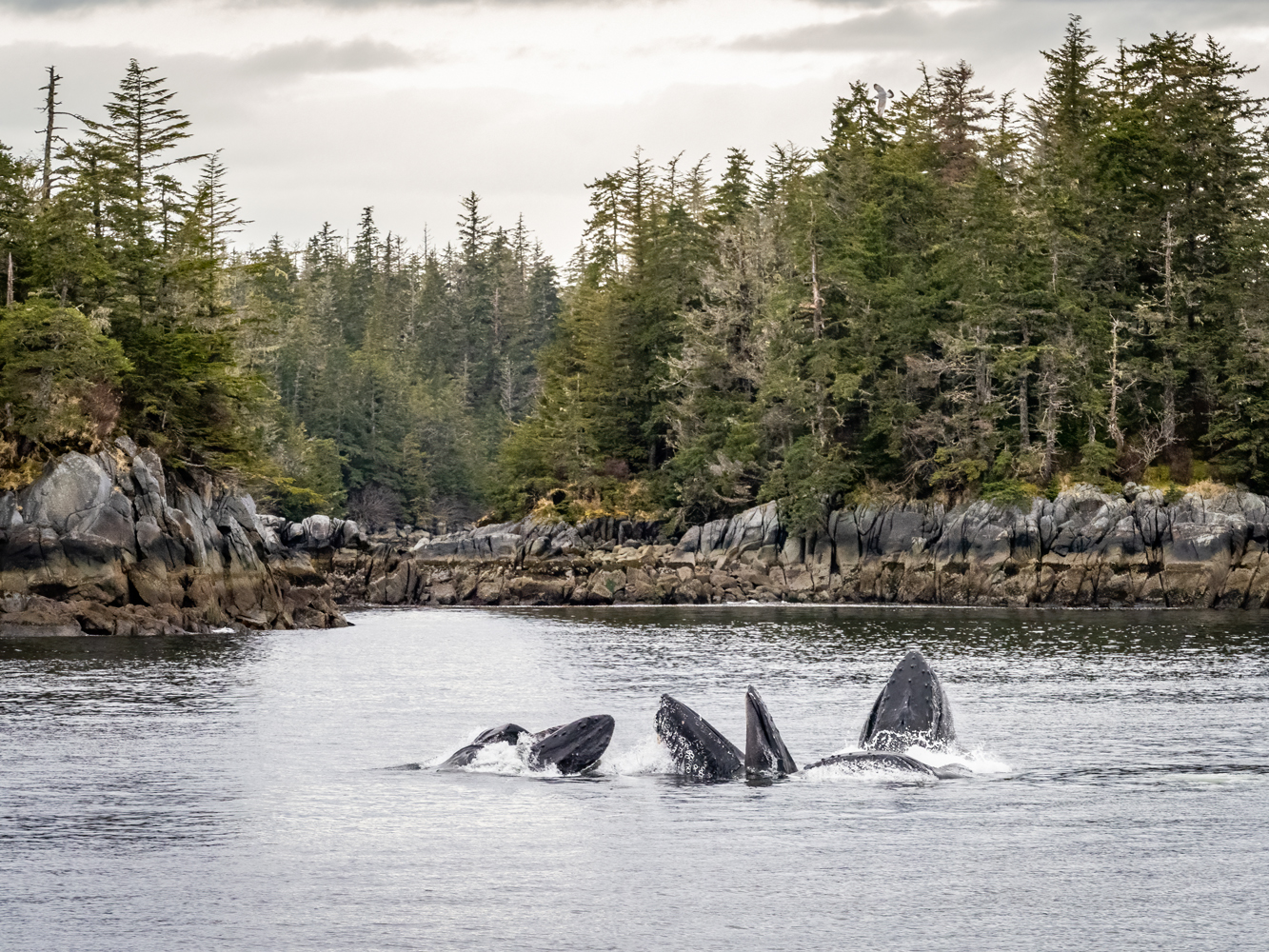
The humpbacks were bubble-netting right along the shore where it was easy to include the wilderness landscape as a background for our photos. (Unfortunately Mount Edgecumbe was not visible due to clouds or our position.) During the cruise we saw at least 150 bubble-nets and photographed the majority of them. These bubble-netting whales work cooperatively to herd the fish into tight balls by a variety of methods culminating in their bubble net and a headlong surge through the fish, mouths agape and fish flying to escape.
Most bubble-net groups on this trip had about 10 or so whales cooperating. What can’t be experienced topside are the amazing vocalizations—feeding calls—they use to coordinate each assault on the schools of herring. That’s where we had our secret advantage—a hydrophone where we could hear them and know, roughly, when the group would rise through the fish and erupt to the surface!
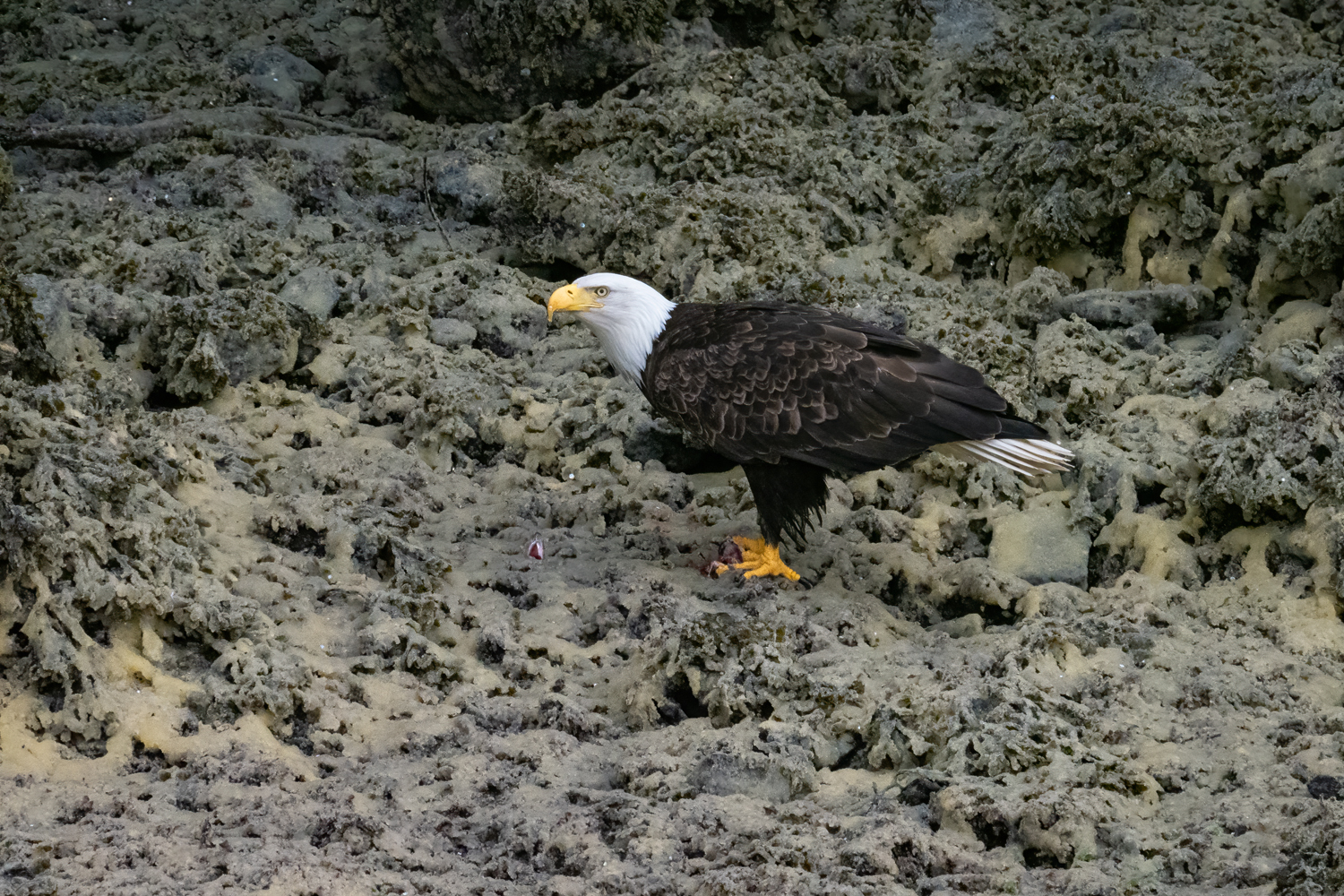
Tens of thousands of gulls and hundreds of eagles wait along the shore as the tide drops so they have easier access to the spawning fish as the water gets shallower in the intertidal zone.
The local Tlingit people also use the intertidal area to harvest herring eggs as the fish spawn. Using young (about 10–15 feet) western hemlock trees they cut from the shore, they weight them down in the water along the shore, creating a spawning reef the fish use as a substitute for kelp and seaweed beds. A float is attached so they can retrieve them. Each tree will receive hundreds of pounds of spawned eggs the Tlingit then tow in small skiffs to the “mothership” where the tree branches are cut off and the trunk discarded. (See the photos in the slideshow.) Unlike Pacific salmon, herring do not die after they spawn so the Tlingit way of egg harvest, and the amount they take, does little to impact the environment.
The Sitka Sound sac roe herring fishery opened on Saturday, March 26—the same day our trip started. Seiners landed an estimated 450 tons of herring in the first 75 minutes of fishing, along the eastern shoreline of Kruzof Island. During the next 2 weeks they caught 26,360 tons of herring, almost 53 million pounds! The Sitka herring fishing season closed for the year on April 10. It was followed by the Ketchikan opening a bit further to the south. The face value of the Sitka catch was about twice what the US paid for Alaska!
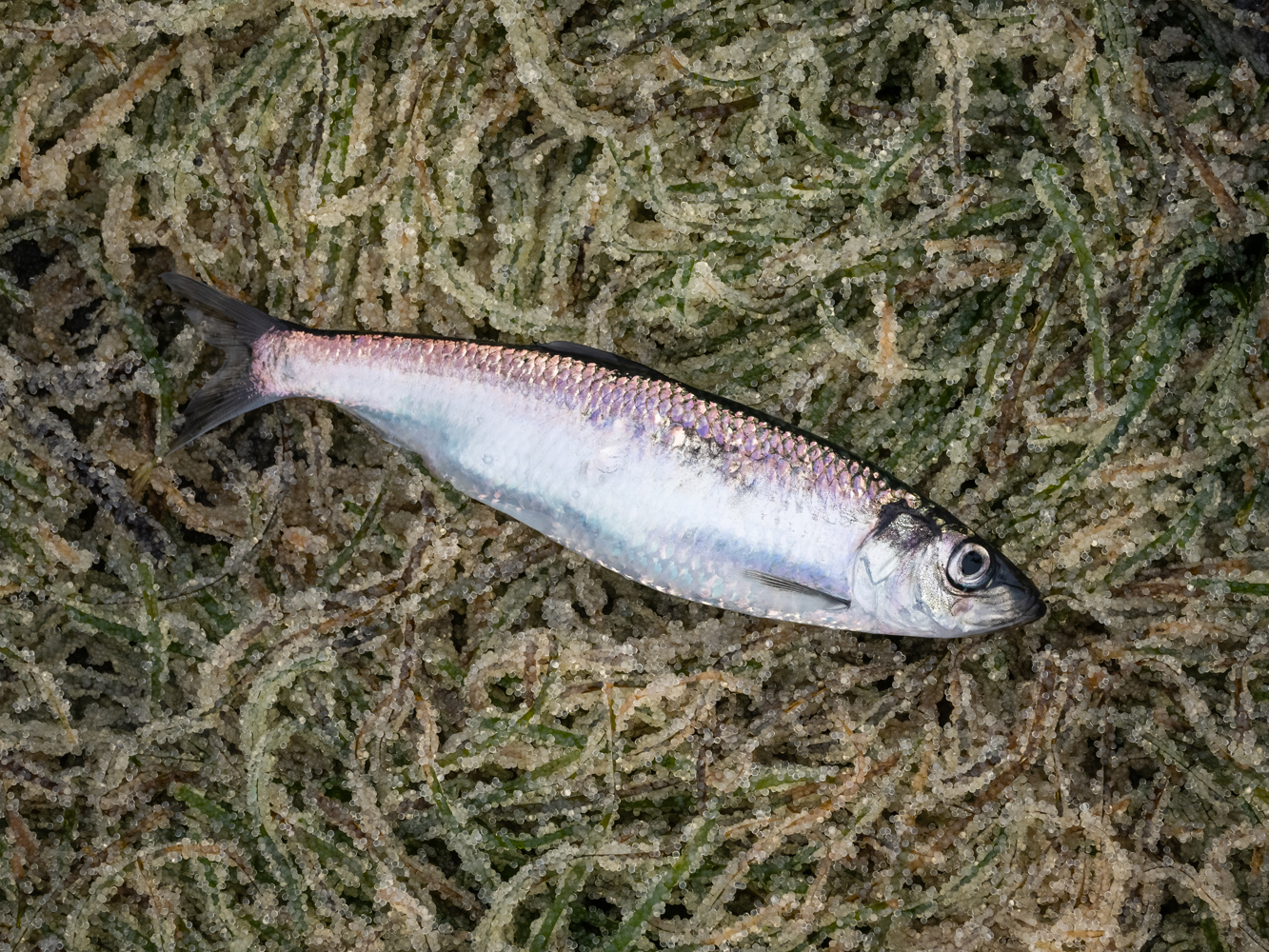
Sac roe, or unlaid herring eggs still in their skein (egg sack), is a delicacy in Japan known as kazunoko. The golden egg skeins are a relatively high-status gift item for people to eat on special occasions. Kazunoko used to be harvested in Japan, but they destroyed that resource by overfishing in 1958. Now, most of those eggs come from Sitka.
The seining boats in action are very photogenic and shots of them with whales bubble-netting in the same image are not hard to accomplish. That said, it does illustrate the competition that wildlife faces with the highly efficient seiners, their fish spotting planes and sonar fishfinders.
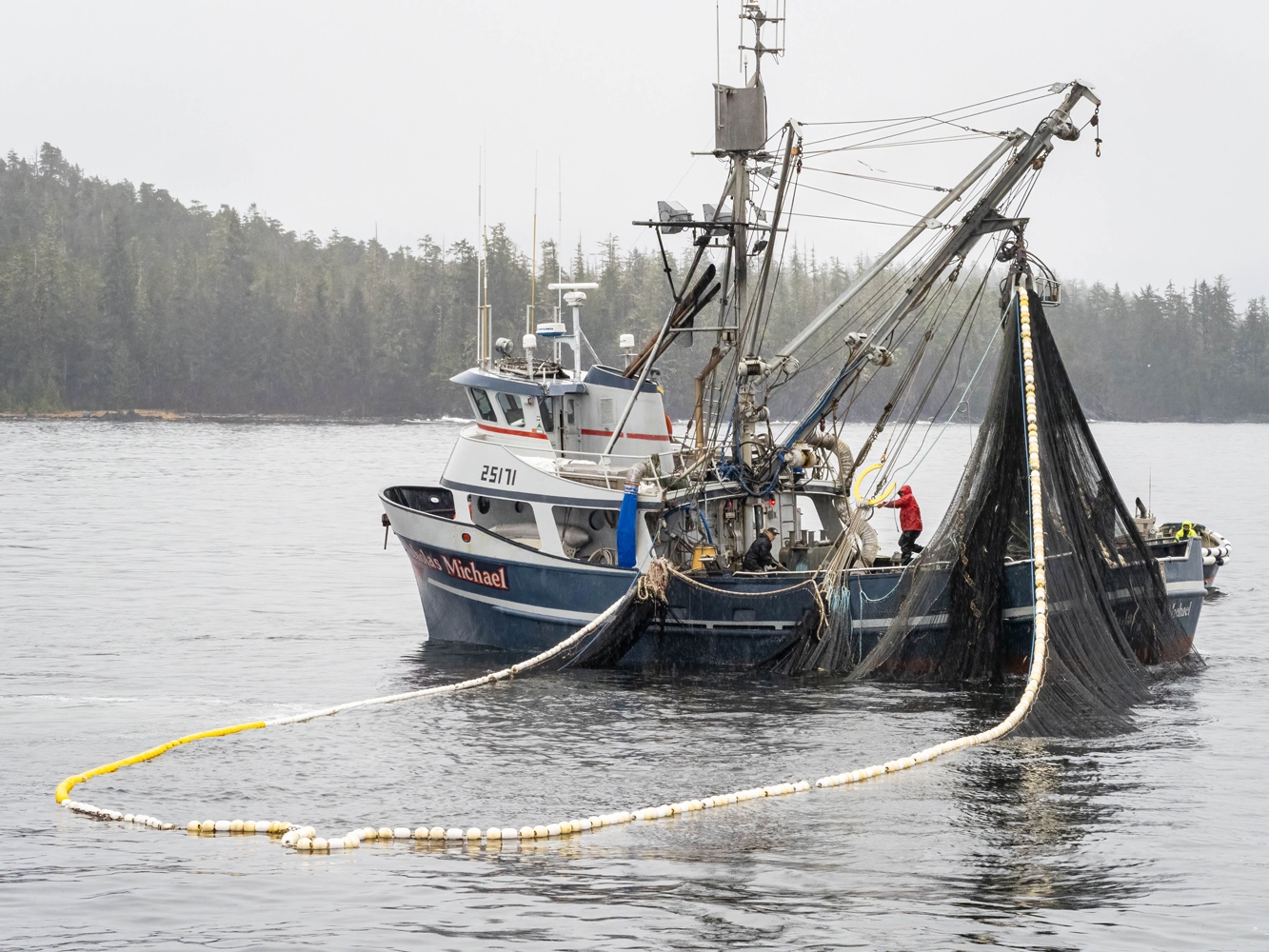
Waste is another issue. Most of the herring is frozen and shipped to Japan, where the roe is extracted by hand. The males have almost no value and are typically turned into fishmeal, sold as bait, or ground up and dumped. That’s also the fate of the female carcasses after their roe is taken. Virtually none is used in the United States.
This trip is highly photogenic and a poignant learning experience to witness a still robust fishery that has been lost in many other places in Earth’s oceans, along with the wildlife that relied on it.

